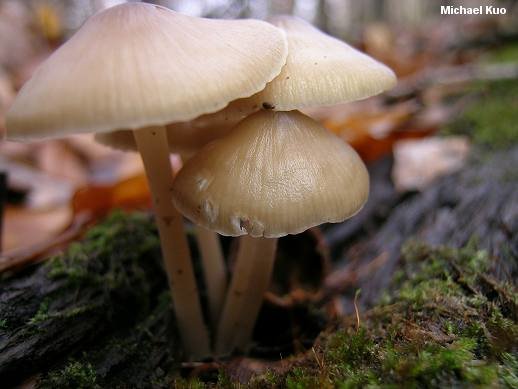Cap-shaped mycena (Mycena galericulata)
- Division: Basidiomycota (Basidiomycetes)
- Subdivision: Agaricomycotina (Agaricomycetes)
- Class: Agaricomycetes (Agaricomycetes)
- Subclass: Agaricomycetidae (Agaricomycetes)
- Order: Agaricales (Agaric or Lamellar)
- Family: Mycenaceae (Mycenaceae)
- Genus: Mycena
- Type: Mycena galericulata (Ball-shaped Mycena)

Hat:
in a young mushroom, the cap is bell-shaped, then it becomes slightly prostrate with a tubercle in the central part. The mushroom cap takes the form of a “bell skirt”. The surface of the cap and its margins are strongly furrowed. Hat with a diameter of three to six centimeters. The color of the cap is gray-brown, slightly darker in the center. A characteristic radial ribbing is noted on the caps of the mushroom, this is especially noticeable in mature specimens.
Pulp:
thin, brittle, with a slight mealy smell.
Records:
free, not frequent. The plates are connected to each other by transverse veins. The plates are painted in a grayish-white color, then become pale pinkish.
Spore Powder:
white.
Leg:
the leg is up to ten centimeters high, up to 0,5 cm wide. There is a brown appendage at the base of the leg. The leg is hard, shiny, hollow inside. The upper part of the leg has a whitish color, the lower brown-gray. At the base of the leg, characteristic hairs can be seen. The leg is straight, cylindrical, smooth.
Spread:
Cap-shaped mycena is found everywhere in forests of various types. It grows in groups on stumps and at their base. A fairly common sight. Fruiting from late May to November.
Similarity:
all mushrooms of the genus Mycena that grow on decaying wood are somewhat similar. The cap-shaped Mycena is distinguished by its relatively large size.
Edibility:
It is not poisonous, but it does not represent nutritional value, however, like many other mushrooms of the genus Mycenae.









